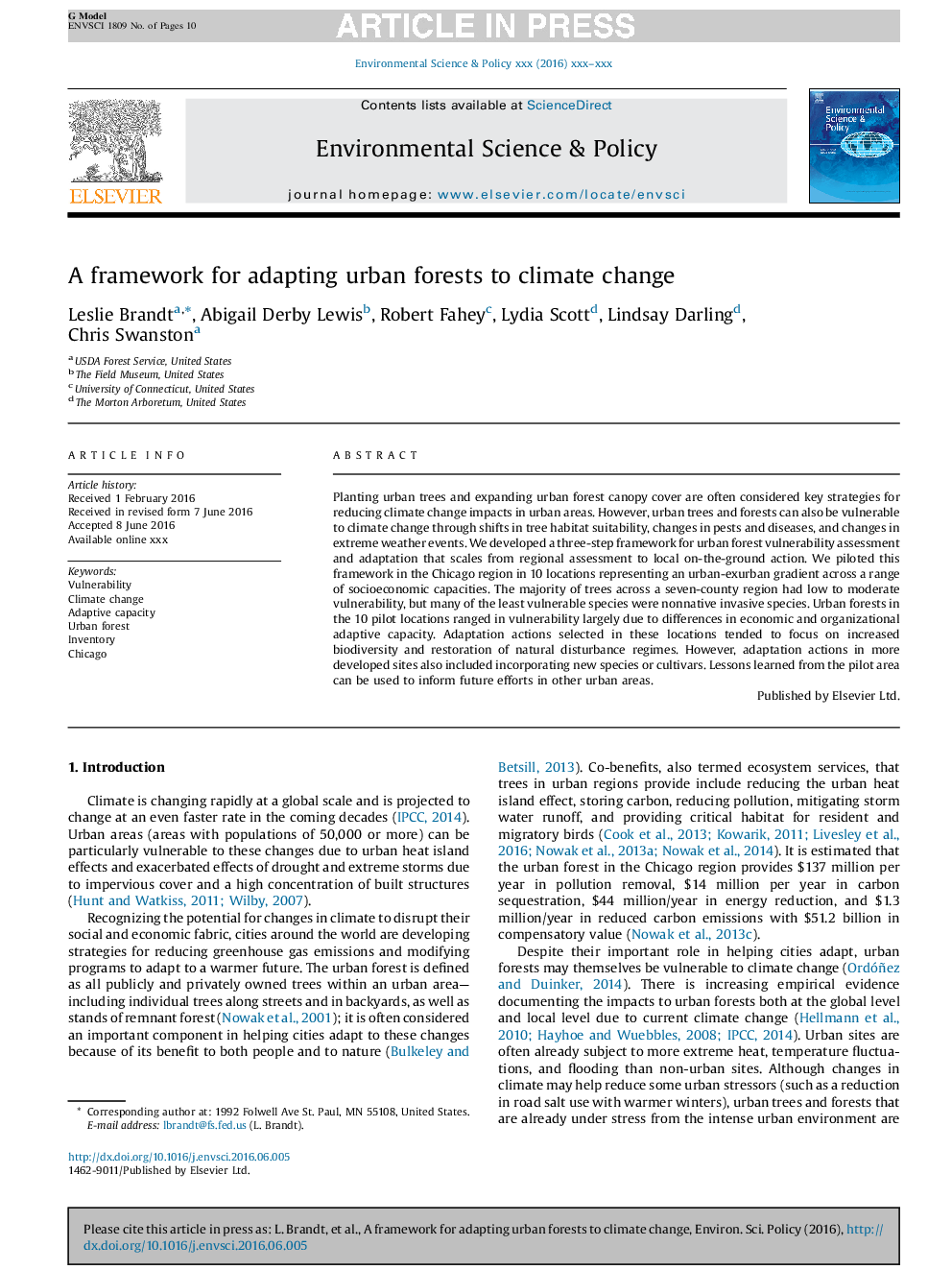| Article ID | Journal | Published Year | Pages | File Type |
|---|---|---|---|---|
| 7466461 | Environmental Science & Policy | 2016 | 10 Pages |
Abstract
Planting urban trees and expanding urban forest canopy cover are often considered key strategies for reducing climate change impacts in urban areas. However, urban trees and forests can also be vulnerable to climate change through shifts in tree habitat suitability, changes in pests and diseases, and changes in extreme weather events. We developed a three-step framework for urban forest vulnerability assessment and adaptation that scales from regional assessment to local on-the-ground action. We piloted this framework in the Chicago region in 10 locations representing an urban-exurban gradient across a range of socioeconomic capacities. The majority of trees across a seven-county region had low to moderate vulnerability, but many of the least vulnerable species were nonnative invasive species. Urban forests in the 10 pilot locations ranged in vulnerability largely due to differences in economic and organizational adaptive capacity. Adaptation actions selected in these locations tended to focus on increased biodiversity and restoration of natural disturbance regimes. However, adaptation actions in more developed sites also included incorporating new species or cultivars. Lessons learned from the pilot area can be used to inform future efforts in other urban areas.
Related Topics
Physical Sciences and Engineering
Energy
Renewable Energy, Sustainability and the Environment
Authors
Leslie Brandt, Abigail Derby Lewis, Robert Fahey, Lydia Scott, Lindsay Darling, Chris Swanston,
